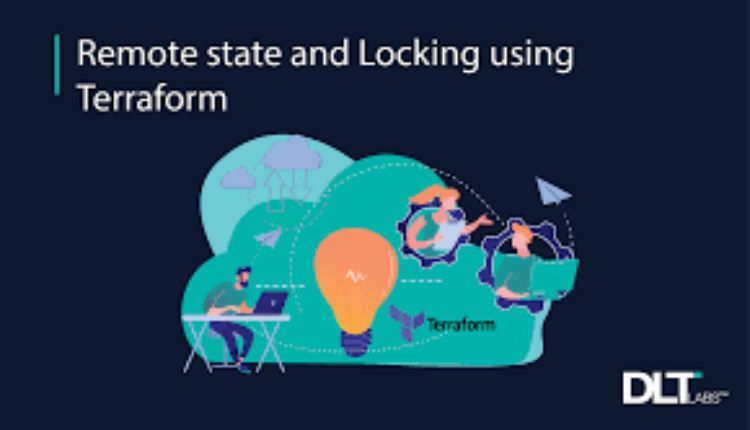Imagine a group of architects designing a skyscraper together. Each one is responsible for different floors, but they all share the same blueprint. If even one person alters the plan without coordination, chaos ensues—walls misalign, elevators don’t connect, and the whole structure becomes unstable. In DevOps, managing infrastructure without proper “state management” is much the same. Terraform provides a blueprint for digital infrastructure, and its state management system ensures that everyone’s changes align perfectly, avoiding disastrous conflicts.
This is where remote state and locking step in—the invisible scaffolding that prevents developers from tripping over each other’s work.
The Concept of State: Terraform’s Memory of Reality
In Terraform, the “state” is like a living memory—a record of what your infrastructure looks like at any given time. Without it, Terraform wouldn’t know whether a server exists, a network is configured, or a database needs to be updated.
When teams scale up, storing this state file locally becomes risky. If multiple people work simultaneously, they might overwrite each other’s changes. That’s why Terraform allows remote state storage—keeping the record in a central, secure location like AWS S3, Azure Blob, or Google Cloud Storage.
Through structured learning such as a DevOps course in Hyderabad, professionals explore how managing state effectively prevents configuration drift—a silent killer of deployment stability that often emerges in complex, multi-developer environments.
The Need for Remote State: Collaboration Without Collision
Remote state isn’t just about convenience—it’s about coordination. When teams collaborate, they need a single source of truth. Terraform’s remote state lets everyone access the same version of infrastructure data, ensuring consistency across environments.
For instance, when a DevOps engineer applies changes to a production environment, Terraform updates the central state. Anyone else working on the same infrastructure automatically references this updated information, reducing the chance of conflicts or duplicate resources.
Remote backends, like Amazon S3 paired with DynamoDB, not only store this state but also manage locking—preventing multiple users from applying changes simultaneously.
It’s similar to a construction site foreman holding a clipboard: no one starts hammering until they’ve confirmed who’s in charge of the next phase.
Locking: Guarding the Blueprint
Locking in Terraform acts as a gatekeeper, ensuring that only one process can modify the infrastructure at a time. Without it, simultaneous updates could lead to mismatched configurations and potential downtime.
Imagine two engineers deploying different updates at once—one adding a virtual machine while the other deletes it. Without a locking mechanism, Terraform could interpret conflicting intentions, leaving the system in an inconsistent or broken state.
Locking systems, often backed by DynamoDB or Consul, act like digital turnstiles—letting one person pass through at a time while others wait for their turn.
Professionals enrolled in a DevOps course in Hyderabad learn to implement these mechanisms hands-on, ensuring their infrastructure-as-code workflows are not only automated but also safeguarded from human and process conflicts.
Remote Backends and Team Efficiency
Managing state remotely transforms how teams operate. Instead of emailing files or syncing changes manually, engineers rely on Terraform’s automation to update the infrastructure seamlessly.
Remote backends also support encryption, versioning, and backup—critical for security and recovery. If an update goes wrong, previous versions of the state file can restore the environment quickly, minimising downtime.
Think of remote backends as the cloud’s version of version control—offering safety nets and transparency in team operations. They bring visibility, allowing every contributor to trace who made what change and when—an essential element of accountability in large-scale DevOps setups.
The Human Element: Collaboration Beyond Code
While state management and locking are technical features, their real power lies in collaboration. These systems bring discipline and trust to teams managing digital infrastructure.
When engineers know their work won’t be accidentally overwritten, they can experiment more confidently. This trust fosters innovation—allowing teams to iterate faster without fear of breaking everything.
Good DevOps isn’t just about code; it’s about culture. And state management, with its blend of automation and safety, embodies that philosophy perfectly.
Conclusion
Terraform’s approach to state and locking is like maintaining a shared blueprint in a constantly evolving construction site—clear, secure, and accessible to everyone involved. Without it, modern DevOps would collapse under its own complexity.
By mastering these fundamentals, teams can prevent chaos before it begins, ensuring every infrastructure change builds upon the last rather than erasing it. As automation continues to drive digital transformation, understanding state management becomes a critical skill for the modern engineer—one that bridges the gap between innovation and stability.
For professionals stepping into this world, gaining hands-on expertise through practical training remains essential. Just as a blueprint keeps architects aligned, mastering Terraform’s state and locking ensures DevOps teams build systems that stand tall, strong, coordinated, and unshakeable.

